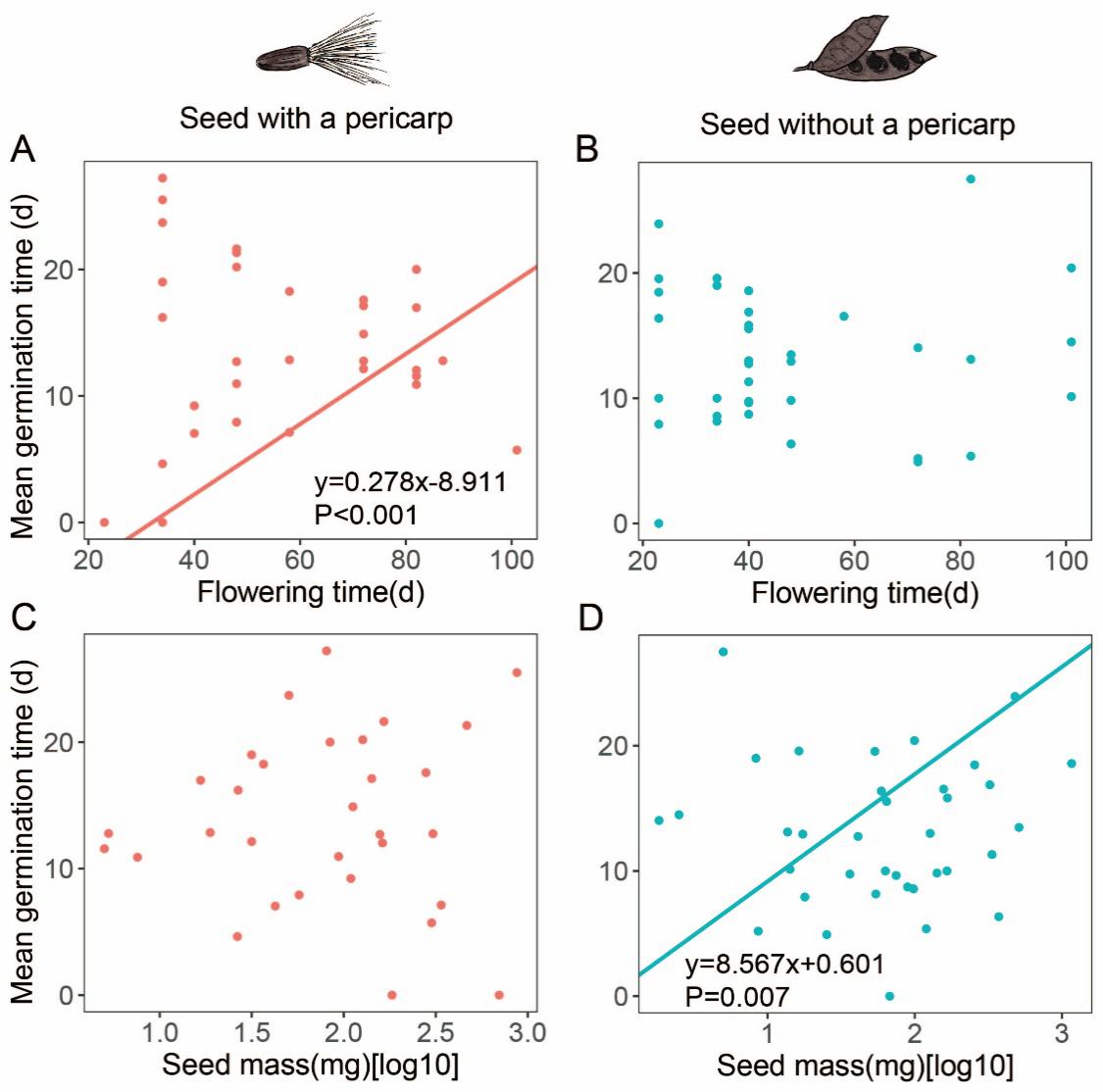Name:YANG Chunfeng
Tell:
Email:cfyang@wbgcas.cn
Organization:Wuhan Botanical Garden
Seeds with and without Pericarps Adopt Distinct Germination Strategies
2024-07-16
Dry fruits are divided into dehiscent and indehiscent types based on whether the pericarp splits open after reaching maturity. As a maternal tissue, the pericarp may impart different germination strategies to the seeds. The germination strategies of seeds with and without pericarps may be associated with maternal conditions and intrinsic resources. However, the interplay between maternal conditions, seed mass, and seed type in the germination strategy remains unclear.
The Plant Reproductive Ecology Group at Wuhan Botanical Garden conducted germination experiments using seeds from a species-rich alpine meadow in the Hengduan Mountains to figure out whether and how germination strategies of seeds with and without pericarps were influenced by maternal conditions (quantified by flowering time) and intrinsic resource levels (seed mass).
The research reveals that seeds with and without pericarps employ distinct germination strategies. Germination speed for seeds with pericarps depends on the flowering time, an estimator of maternal condition, while for those without pericarps, it is associated with their own resource level, the seed mass.
The results enrich the understanding of seed ecology by incorporating ecologically mediated maternal conditions and inherent genetical properties.
This study was published in Annals of Botany, titled "Mother-reliant or self-reliant: the germination strategy of seeds in a species-rich alpine meadow is associated with the existence of pericarps". The PhD student LI Xiaoqing is the first author and Prof. YANG Chunfeng is the corresponding author. This study was supported by the National Natural Science Foundation of China.

The mean germination time (in days) in relationship to flowering time (in days; a, b) and seed mass (in milligrams; c, d) of seeds with a pericarp (red) and seeds without a pericarp (blue) (Image by WBG)